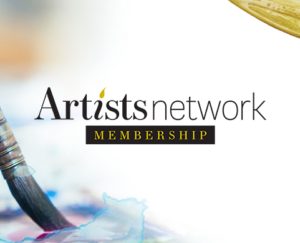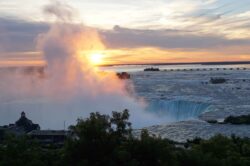Beginner Oil: Oil Painting Materials: The Basics

Oil Painting Techniques for Beginners
Pigments and mediums
Oil paint is pigment suspended in oil, usually linseed oil. Painters thin oil paints by adding either more oil or a solvent, such as turpentine–or a mixture of both.
In addition to linseed, artists use walnut, poppy seed, and safflower oils when painting. Each has its merits, and artists hold different opinions on which oil is preferable. For example, many painters swear by walnut oil, but it is expensive, and others assert that poppy seed oil dries with the least yellowing. Linseed is the most common oil, but it is known to yellow noticeably as a painting ages.
In addition to turpentine, artists use mineral spirits and Turpenoid. Turpentine is made from a tree resin; mineral spirits and Turpenoid are petroleum products.
Other mediums used by painters include varnishes and resins. These mediums give paint a jewellike shine, allow for easy glazing of color layers, and protect the finished painting by acting as a hard shell.
Brushes
Paintbrushes generally fall into two categories: soft-hair and bristle. Both categories feature natural hair or synthetic fibers.

Soft-hair brushes, which can be made from synthetic fibers, sables, squirrels, or oxen, allow smooth strokes and delicate marks. They are ideal for watercolor painting because they can hold a larger amount of thin paint. Bristle brushes, which are sometimes made with hog’s hair, are for scrubbing in a color or quickly blocking in an underpainting–or for adding texture to a piece. They are also useful for applying thick paint, and watercolorists occasionally use them to pull pigment off a surface.
Brushes come in several shapes. Rounds feature a cylinder of hair that usually comes to a point. Filberts are flat brushes with a rounded tip. Flats are flat brushes with sharp corners.
Artists also regularly use palette knives for moving paint around on the surface, sculpting edges in the paint, creating large, flat planes of thick paint, and applying large amounts of paint for highlights. The palette knife is also used to mix colors on the palette.
Canvases
One chooses the appropriate canvas by considering the texture desired for the composition and the amount of money one wishes to spend. Canvas is primarily made from either linen fibers or cotton. Two examples: Portrait linen is very smooth–and expensive. Cotton duck has more texture and is more affordable.
Canvas can be purchased in a roll or prestretched over a frame. It can be bought primed with gesso or in its raw state. If canvas isn’t primed, the paint will bleed into adjacent areas, plus the archival quality of the canvas will be compromised. Artists can save money by stretching canvas themselves.
Written by Bob Bahr.
See more oil painting techniques for beginners here.
 Artists Network Membership - 1 Year
Artists Network Membership - 1 Year  Breakthrough Paint Along: Where Mixed Media Combine Together
Breakthrough Paint Along: Where Mixed Media Combine Together  Paint Along 127: Paint the Motion of the Sea
Paint Along 127: Paint the Motion of the Sea  Breakthrough Paint Along: The Big Value of Miniature Landscapes
Breakthrough Paint Along: The Big Value of Miniature Landscapes  Portrait Painting: Rembrandt's Techniques Video Download
Portrait Painting: Rembrandt's Techniques Video Download  Figure Drawing Tips with Brent Eviston Video Download
Figure Drawing Tips with Brent Eviston Video Download  Southwest Art August/September 2025 Digital Edition
Southwest Art August/September 2025 Digital Edition  Artists Magazine July/August 2025 Digital Edition
Artists Magazine July/August 2025 Digital Edition  Pastel Journal Summer 2025 Digital Edition
Pastel Journal Summer 2025 Digital Edition  Artists Magazine March/April 2025 Digital Edition
Artists Magazine March/April 2025 Digital Edition  Artists Magazine January/February 2025 Digital Edition
Artists Magazine January/February 2025 Digital Edition  Best of Watercolor: Winners of the Splash 26 Competition Print Edition
Best of Watercolor: Winners of the Splash 26 Competition Print Edition  Southwest Art June/July 2025 Print Edition
Southwest Art June/July 2025 Print Edition  Artists Magazine May/June 2025 Print Edition
Artists Magazine May/June 2025 Print Edition  Southwest Art 2021 Digital Collection × 1
Southwest Art 2021 Digital Collection × 1  Watercolor Artist 2020 Digital Collection × 1
Watercolor Artist 2020 Digital Collection × 1  Watercolor Artist 2019 Annual Digital Collection × 1
Watercolor Artist 2019 Annual Digital Collection × 1  Watercolor Mega Magazine Collection × 1
Watercolor Mega Magazine Collection × 1  Pastel for Beginners Workshop
Pastel for Beginners Workshop  Composition & Design for Landscape Painting Video Workbook
Composition & Design for Landscape Painting Video Workbook  Drawing Mastery: Shading Course
Drawing Mastery: Shading Course  Alla Prima Bootcamp: 4 Weeks to Confident Painting Course
Alla Prima Bootcamp: 4 Weeks to Confident Painting Course  Eight Greats: The Pastel Journal's 10th Anniversary Artist Interview Series Digital Download
Eight Greats: The Pastel Journal's 10th Anniversary Artist Interview Series Digital Download  Secrets of Hyperrealist Watercolor Course
Secrets of Hyperrealist Watercolor Course  Acrylic Artist Summer 2017 Digital Edition
Acrylic Artist Summer 2017 Digital Edition  Exploring Acrylic: Abstract Art in Action Video Download
Exploring Acrylic: Abstract Art in Action Video Download  WetCanvas Live! Paint Stunning Landscapes from Photos: Lesson 23 & 24 Video Download
WetCanvas Live! Paint Stunning Landscapes from Photos: Lesson 23 & 24 Video Download  WetCanvas Live! Paint Stunning Landscapes from Photos: Lesson 9 & 10 Video Download
WetCanvas Live! Paint Stunning Landscapes from Photos: Lesson 9 & 10 Video Download  The Whimsical Face with Jane Davenport Video Download
The Whimsical Face with Jane Davenport Video Download  Mixed-Media Faces Made Easy Video Download
Mixed-Media Faces Made Easy Video Download  What It Takes to Teach Video Download
What It Takes to Teach Video Download  On the hunt for found objects: How to Create New and Eclectic Molds Video Download
On the hunt for found objects: How to Create New and Eclectic Molds Video Download  Urban Sketching: Drawing People in Places Video Workbook
Urban Sketching: Drawing People in Places Video Workbook  Graffiti Grunge Art by Jodi Ohl Video Workbook
Graffiti Grunge Art by Jodi Ohl Video Workbook  Portraits: From Good to Great Video Download
Portraits: From Good to Great Video Download  Low-Tech Metal Apps: Wire, Foil, Mesh, & Screen Video Download
Low-Tech Metal Apps: Wire, Foil, Mesh, & Screen Video Download  Paint Along 126: Simplify Your Landscapes with a Limited Palette
Paint Along 126: Simplify Your Landscapes with a Limited Palette  Experimental Pastel Techniques with Dawn Emerson Video Download
Experimental Pastel Techniques with Dawn Emerson Video Download  Painting Patterned Trees Video Download
Painting Patterned Trees Video Download  Paint Along 125: Paint the Charming Towns of Italy
Paint Along 125: Paint the Charming Towns of Italy  Essentials of Painting Still Lifes
Essentials of Painting Still Lifes  7 Days to a Steady Journal Practice Video Download
7 Days to a Steady Journal Practice Video Download 




Have a technical question?
Contact UsJoin the Conversation!